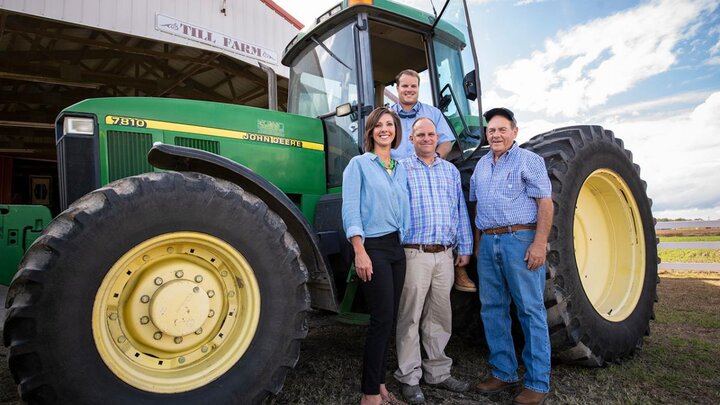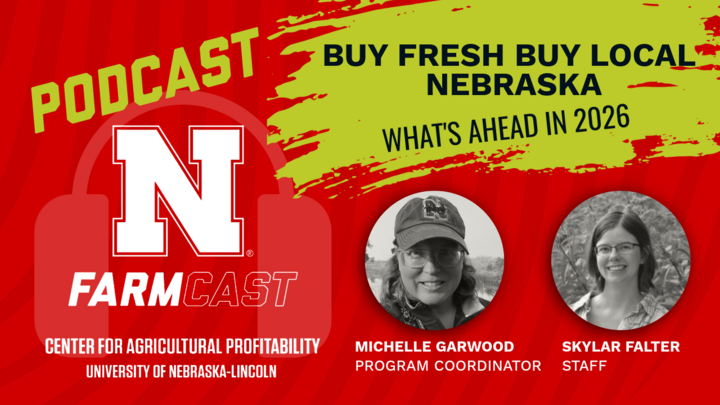Many use the terms “farm estate planning” and “farm transition planning” interchangeably. There are some important differences. Estate planning can simply be what happens to assets when one generation passes. Transition is the important planning that allows the successors the opportunity to keep that farming or ranching operation in business and moving forward.
Transition, therefore, is the planning process that includes what happens to ownership when one generation steps aside and also adds the planned transfer of the management of the operation to the successor. Transition planning includes not only the goal of successful succession of the farm/ranch, but also a strategy to meet the retirement needs of each generation.
Each farm family is different regarding its goals for transition planning. Family dynamics, physical resources, financial position, and managerial styles vary from operation to operation. As farmers plan to transfer the family business to the next generation, there are a myriad of decisions to be made. One of the most difficult is determining how to be fair to off-farm heirs without jeopardizing the future of the heirs who have remained with the family business. Other decisions include deciding who will manage the business in the future, how to distribute assets, how and when the senior generation will retire, and how the business will deal with the unexpected.
Before going too deep into a transition, stop and determine if the business is profitable and can be viable for the next generation. This is especially important during the transition phase where at least two incomes might need to be generated from that farm or business. Look at the commodity productivity, farm efficiencies, and debt structure, which all help determine the overall viability of the business.
Transition planning needs to be discussed with the entire family including off-farm siblings. That family input needs to be gathered very carefully and respectfully. Family business meetings can help the entire family communicate about sensitive issues. They can also allow the family to plan for growth so that multiple generations can earn a living from the business. These meetings also allow the family to develop a transition plan that complements the estate, retirement, investment, and business operation plans.
When the new generation of operators comes back to the farm, it is normal to put them through some type of testing phase. Are they going to be willing to do all the tasks required to help the older partners move the operation forward? This testing phase length should be determined in advance. There have been situations where the “testing” has lasted 10 years or longer.
Transferring the management of the farm/ranch business can be as contentious as any part of the transition. Transferring too much responsibility too quickly will result in frustrations. Leaving the newer generation on the business end of the pitchfork or the fencing pliers for too long may lead to that set of workers being frustrated with their lack of management responsibilities. Making a timed plan for management transfer is an important piece of the transition plan. The only way any of us really learned on the farm/ranch is with experience. The real way to get experience is to have the control of the management to see how outcomes are affected with the decisions being made.
Transferring assets also needs to be addressed in the farm/ranch transition plans. Tangible items include things you can touch such as breeding livestock, crop inventories, machinery, equipment, land, and buildings. Rarely does the next generation take over ownership of all the tangible business assets at once. Usually, ownership is assumed as their experience and commitment to the business increase. These assets can be transferred through gifts, sales, or through the estate or a trust upon death. Due to the potential tax implications of transferring these assets, consultation should be with an attorney and tax practitioner, each having experience in transition planning.
Successful businesses also recognize that life is full of twists and turns. Given this, attention should be given to the unexpected. Contingency plans should be made for when key managers leave the business unexpectedly or when unplanned events such as death, divorce, disability, and health problems arise. Each of these unexpected twists could damage the viability of the operation if contingency plans have not been made.
It is very true that most farmers/ranchers do not ever plan to retire, at least not fully retire. There are some considerations that need to be dealt with. If the older generation retires, the two main retirement questions that will need to be addressed are how much money does each family member need for retirement and what will the farm obligation be to retirees? A variety of factors such as age at retirement, retirement housing and other retirement accounts held by the family will affect the amount needed for retirement. It is important that the profitability of the farm be such that a family member can retire and not adversely affect the financial position of the business.
It does not happen all at once. A timetable should be established for accomplishing each step in the transition process. Without a timetable, you will not know if you are failing or succeeding in hitting your objectives. Many families will utilize a testing or a probationary period for the transfer of ownership, management, income, and labor. Given the complexity of most farm operations, the transition process could take years.
Adapted from Planning for the Successful Transition of Your Agricultural Business. David L. Marrison, Associate Professor and Extension Educator, Agriculture and Natural Resources, Coshocton County. Revised in 2021.




